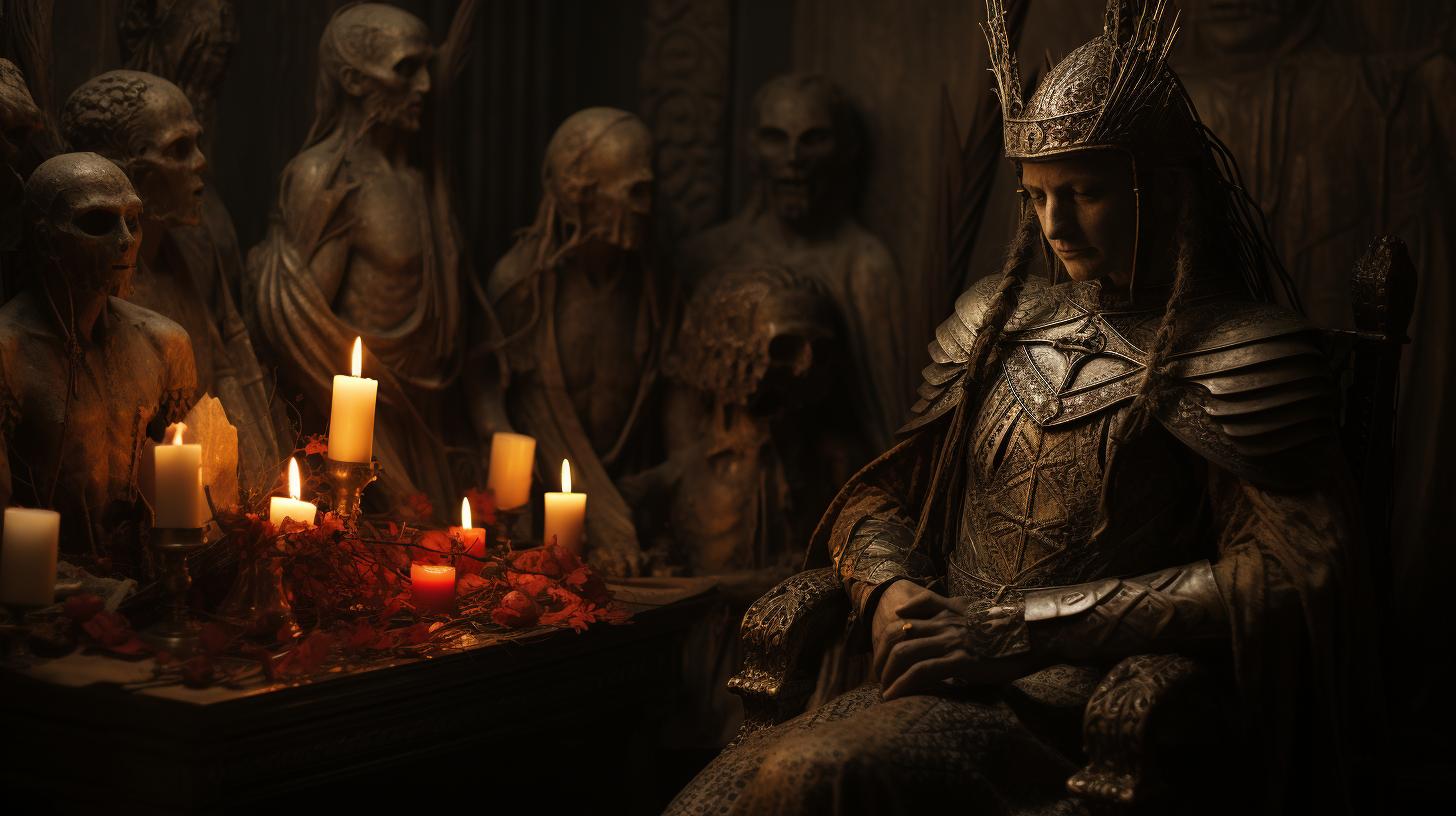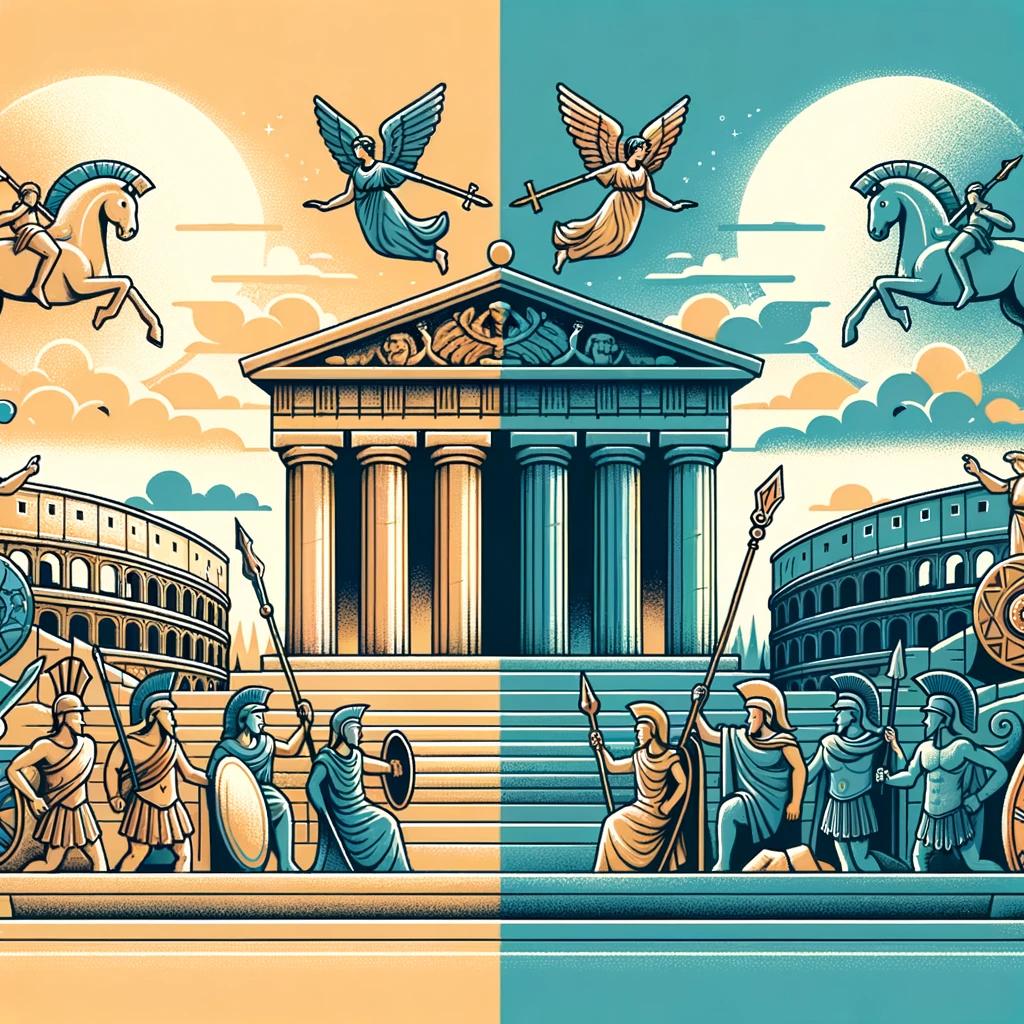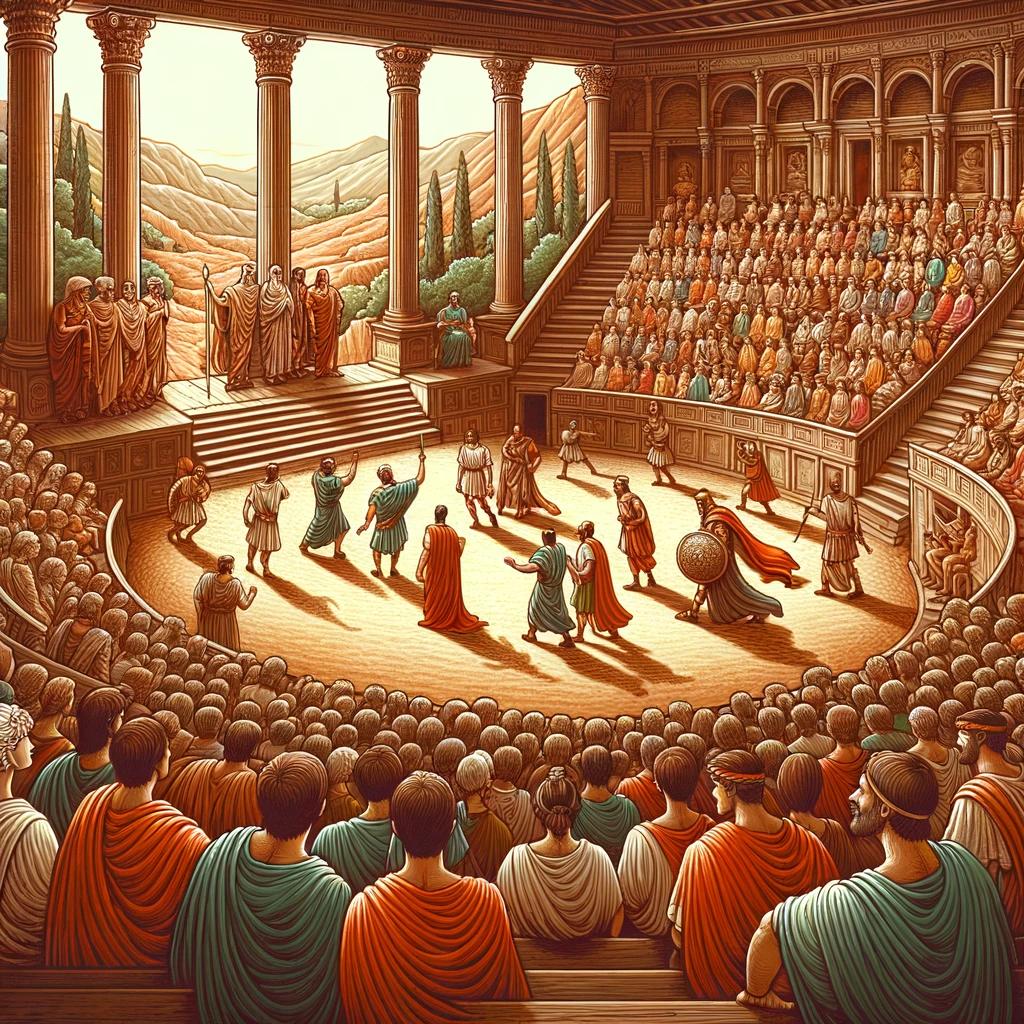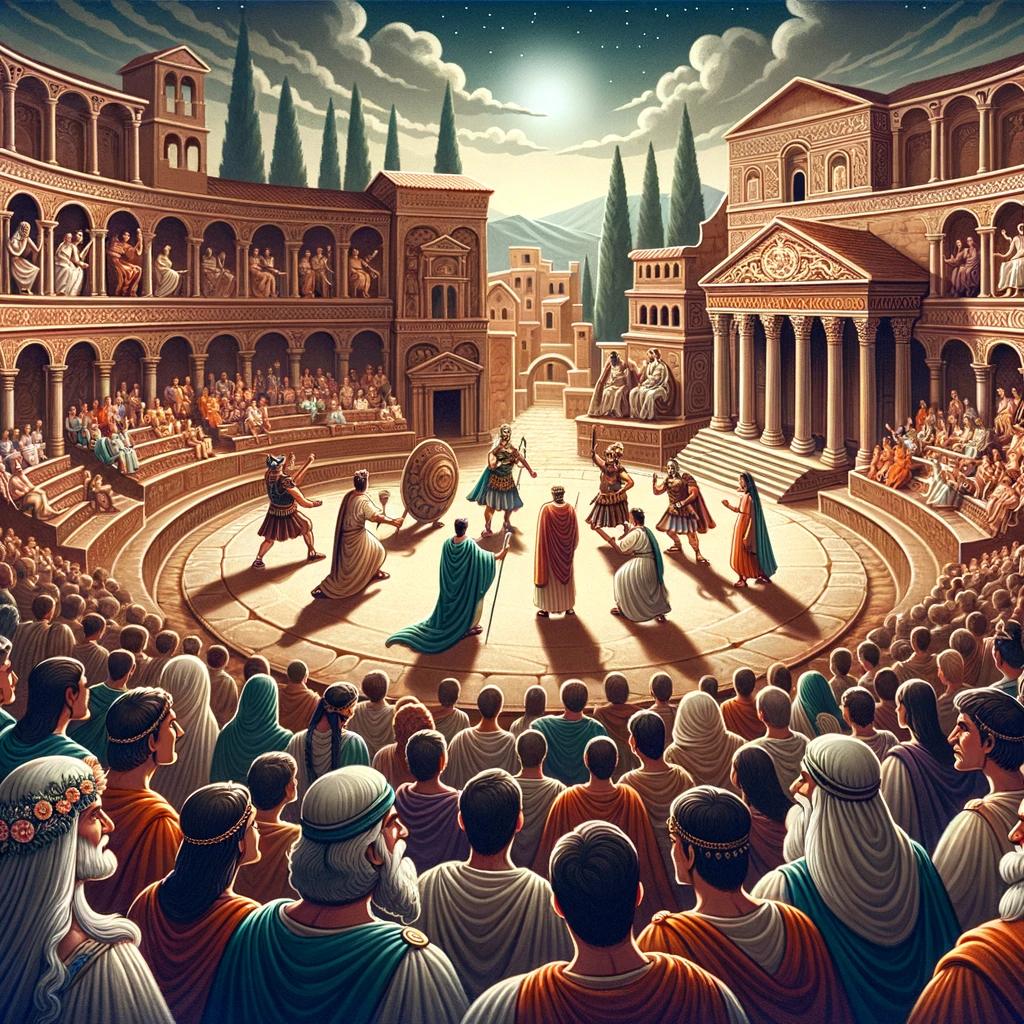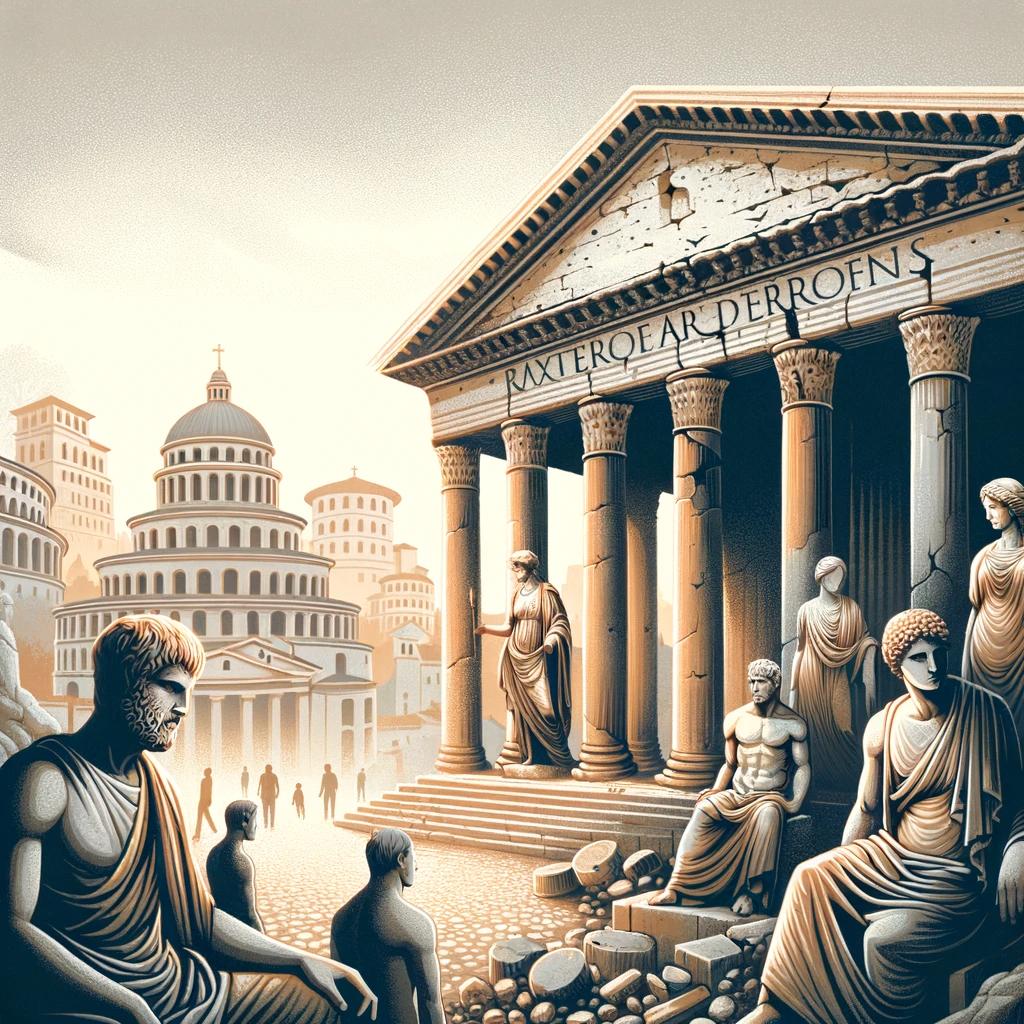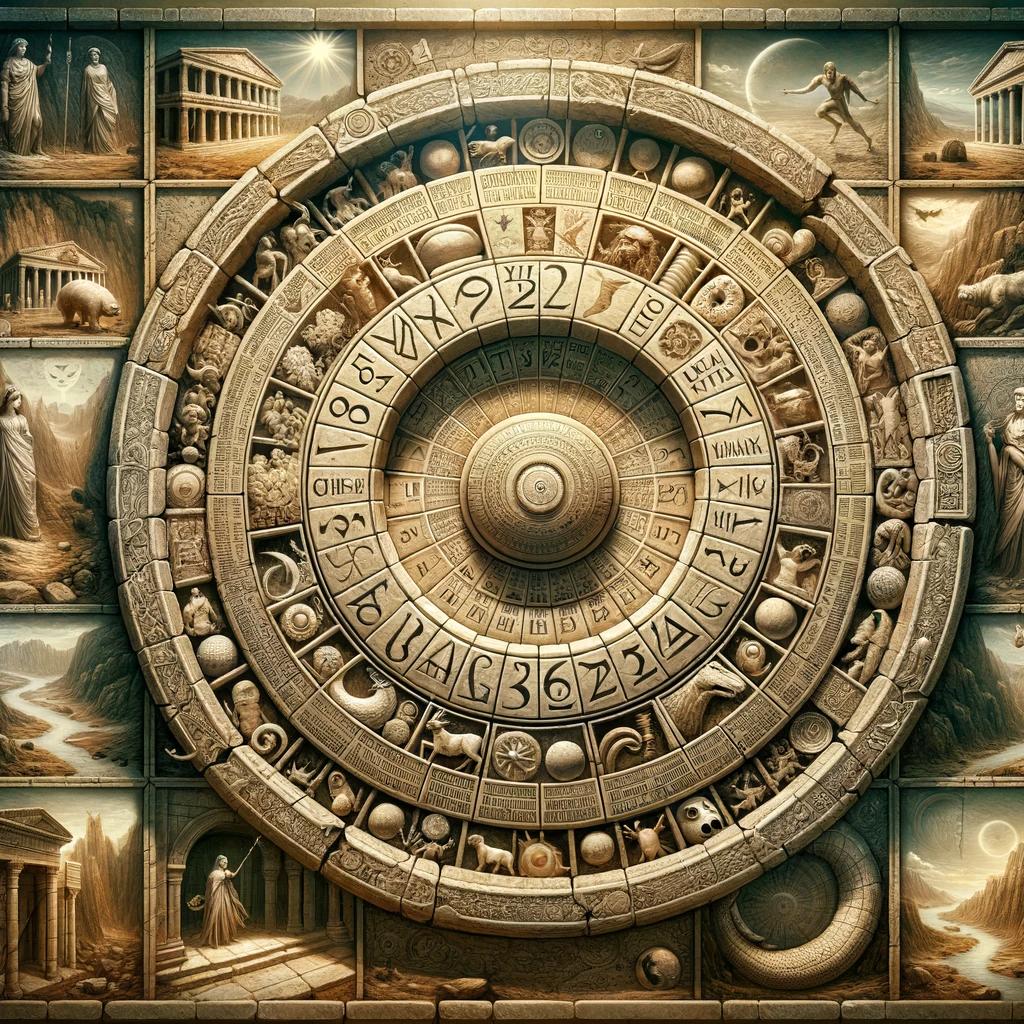Lemures in Roman Mythology: Malevolent Spirits Haunting Ancient Rome
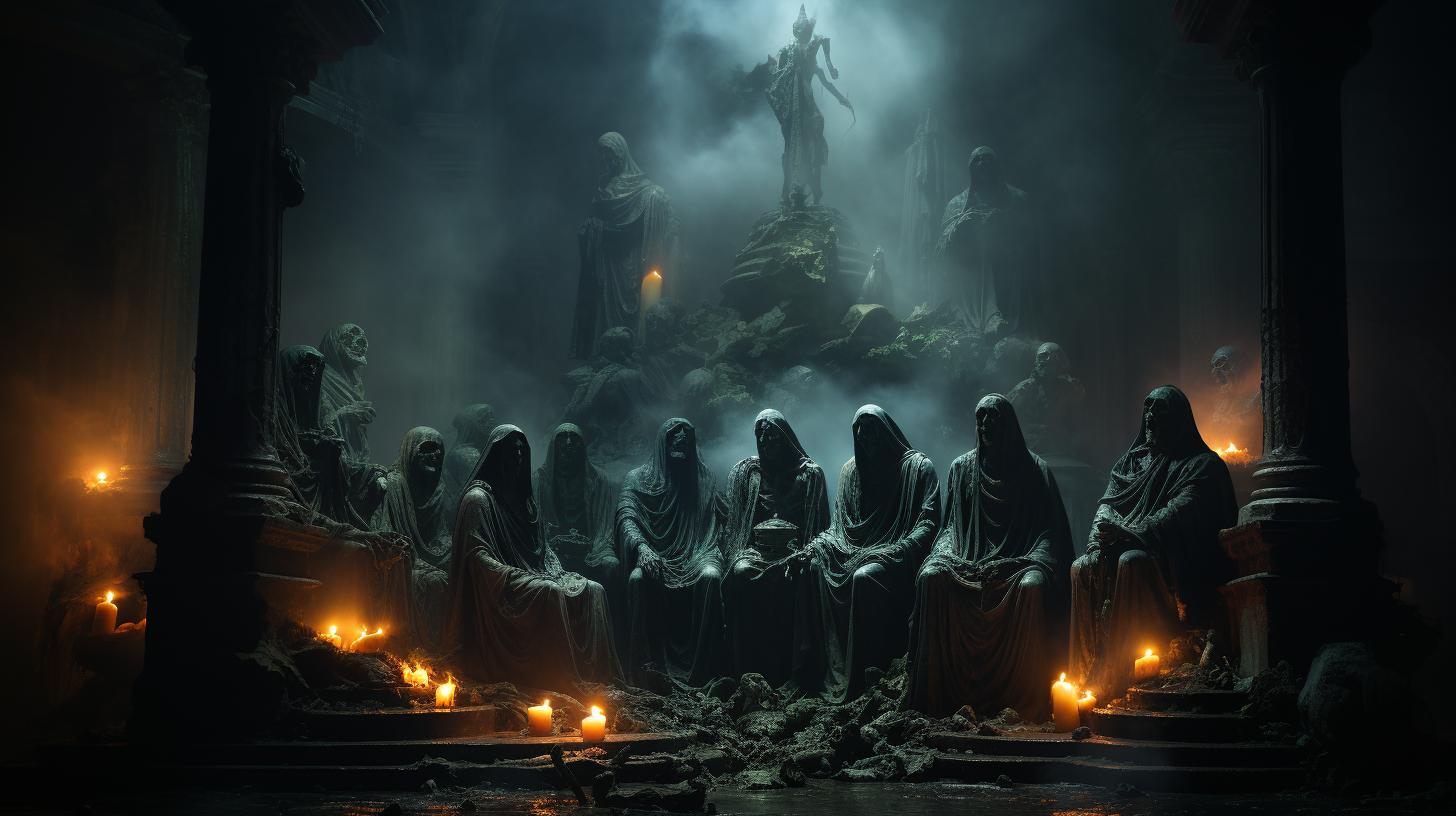
Lemures, malevolent spirits in Roman mythology, were feared entities believed to torment the living. In ancient Rome, rituals known as Lemuria were performed to keep these ghosts away from homes.
The connection between lemures and lemurs in Madagascar, while sharing a common name, lacks the same menacing connotation. This article explores the origins, beliefs, rituals, and differing interpretations surrounding lemures in Roman mythology, as well as their relation to lemurs.
Journey into the world of these haunting spirits across the pages ahead.
Lemures in Roman Mythology: Exploring the Malevolent Spirits
In ancient Roman mythology, lemures were believed to be malevolent spirits that struck fear into the hearts of the living. These grotesque and terrifying beings were thought to torment their living relatives and inflict harm upon them.
Romans performed rituals known as Lemuria to ward off these haunting specters from their homes.
The Lemuria rituals, observed annually on May 9th, 11th, and 13th, involved the head of each family rising at midnight, purifying their hands, and tossing black beans for the spirits to collect.
They also recited supplications in hopes of driving the spirits away. The existence and actions of lemures were closely intertwined with superstition and fear.
In Roman mythology, there were other types of spirits or shades of the dead.
Lares were considered benevolent spirits, while Manes were seen as indeterminate. Lemures, also known as larvas, were regarded as evil spirits. Some interpretations suggest that lemures were restless souls who had met violent or premature deaths, wandering among the living to torment and drive them to madness.
Join us on a journey through the dark and mysterious world of lemures, where we explore their origins, the beliefs surrounding them, the rituals performed to appease them, and their connection to other spirits of the dead.
The Origins of Lemures: Mythological Background and History
In the realm of Roman mythology, lemures hold a significant and malevolent presence. These dark spirits are believed to have originated from the restless souls of the deceased. According to ancient beliefs, lemures would haunt the living, causing harm and torment.
Interestingly, lemures are often associated with the tragic figure of Remus, the co-founder of Rome who was killed by his own brother, Romulus. Some even suggest that the original Lemuria festival was dedicated to appeasing the spirit of Remus.
Over time, however, the concept of lemures expanded and encompassed a broader range of malevolent entities.
These spirits were thought to be the result of violent or premature deaths, as well as those who had not received proper funeral rites.
It was believed that their restless souls would roam the earth, seeking vengeance and causing misfortune to the living.
The origin and nature of lemures differ from other Roman spirits like Lares, benevolent household guardians, and Manes, indeterminate ancestral spirits.
While Lares brought protection and good fortune, lemures evoked fear and required rituals to alleviate their harmful presence.
Understanding the mythological background and history of lemures provides a deeper insight into the beliefs and practices associated with these malevolent spirits in Roman culture.
Roman Beliefs on Lemures: Their Nature and Attributes
In Roman mythology, lemures were regarded as malevolent and terrifying spirits. They were believed to manifest in grotesque and horrifying forms, tormenting their living relatives and causing them harm. These menacing entities were said to be restless souls that had not found peace due to violent or premature deaths.
Some interpretations suggest that lemures were the torments of the dead, resulting from their violent or immoral actions in life. They would wander among the living, inflicting madness and torment upon them.
The Romans performed various ceremonies and festivals to appease these spirits, aiming to satisfy their demands and keep them at bay.
Unlike the benevolent Lares and the indeterminate Manes, the lemures were associated specifically with evil and malevolence.
They were believed to be capable of inflicting harm upon the living and exacerbating their fears and troubles. The rituals and festivals, such as Lemuria, were performed with the intent of warding off these harmful spirits.
Overall, the Roman beliefs surrounding lemures painted them as fearsome entities capable of bringing misfortune and suffering. The rituals conducted were aimed at appeasing and protecting against their malevolence, keeping their haunting presence at bay.
Lemuria Rituals: Warding off the Harmful Spirits
As part of Roman beliefs and practices, the Lemuria rituals were crucial in safeguarding homes from the malevolent lemures. These rituals took place annually on the 9th, 11th, and 13th of May, serving as a means to keep these haunting spirits at bay.
The head of each household played a central role in the Lemuria rituals. At midnight, the father would rise and purify his hands before scattering black beans, known as “Favae,” throughout the house.
It was believed that the lemures would gather to collect these beans, diverting their attention away from tormenting the living. Meanwhile, supplications would be recited, pleading for the spirits to depart and leave the family in peace.
The Lemuria rituals were essential precautions taken by the Romans to ensure their homes were protected from the malevolent influence of the lemures. These practices aimed to appease the spirits and maintain their distance from the living, offering a sense of security and relief amidst the eerie presence of these spectral entities.
Parentalia Festival: Honoring Ancestral Spirits
The Parentalia festival, also known as Feralia, was a sacred time for the Romans to pay homage to their ancestral spirits and seek their blessings and protection. Lasting from the 18th to the 21st of February, this solemn occasion united the living and the spirits in a shared meal and commemorative rituals.
During the Parentalia festival, families gathered at ancestral tombs, bringing offerings of food, wine, and flowers to honor their deceased loved ones. They cleaned the graves, adorned them with wreaths, and lit sacred fires to guide the spirits to their rightful place.
A significant tradition during Parentalia was the sharing of a meal, which acted as a symbolic bond between the living and the departed. Families would bring food to the gravesites, setting a place for their ancestors at the table, and partaking in a feast together.
Prayers and offerings were made at the tomb, expressing gratitude and seeking the favor of the ancestral spirits. The Romans believed that this commemoration would strengthen the connection between the living and the dead, ensuring the well-being and protection of the family.
The Parentalia festival served as a vital reminder of the importance of family and ancestral heritage in Roman society. It emphasized the continuity between generations and the ongoing presence and influence of departed loved ones.
Today, while the ancient practices of the Parentalia festival have given way to modern traditions, the concept of honoring and remembering ancestral spirits continues to hold significance in various cultures around the world.
Lemures vs. Lares: Differentiating Good and Evil Spirits
Within Roman mythology, the spiritual realm is inhabited by various entities, including lemures and lares. While both lemures and lares are associated with the world of the dead, their nature and intent differ significantly.
Lemures are regarded as malevolent and terrifying spirits that bring harm and torment to the living. They are believed to appear in grotesque and haunting forms, causing havoc among their living relatives.
In contrast, lares are considered benevolent spirits, offering protection and guidance to individuals and families.
The distinction between lemures and lares is rooted in their respective roles within Roman religious practices.
Lemures were appeased and banished through rituals like the Lemuria, conducted on specific dates each year, where beans were scattered to lure the spirits away. On the other hand, lares were honored and venerated as ancestral guardians during festivals such as the Parentalia, where meals were shared with these beneficent spirits.
While both lemures and lares play integral roles in Roman mythology, their contrasting natures reflect the duality of the ancient Roman belief system. The lemures embody the darker aspects of the afterlife, while the lares represent the positive and protective forces guiding humanity.
Understanding the dichotomy between lemures and lares sheds light on the diverse range of spiritual entities within Roman mythology. It highlights the complex interplay between good and evil, and the importance of appeasing and honoring these supernatural forces for the well-being of the living.
Interpretations of Lemures: Ancient Perspectives and Modern Understandings
In ancient Roman mythology, lemures were believed to be malevolent and ominous spirits that tormented the living. These haunting entities were often associated with death, unrest, and chaos. Different interpretations existed regarding the origins and nature of lemures, reflecting the diversity of perspectives within Roman culture.
Some ancient authors viewed lemures as the tormented souls of individuals who had suffered violent or premature deaths. These restless spirits wandered among the living, causing madness and torment. Others believed that lemures were symbolic representations of the dark and evil aspects of human nature, manifesting as spectral entities to remind people of their moral obligations.
Modern understandings of lemures in Roman mythology vary, influenced by archaeological discoveries and scholarly research. Some interpret lemures as mere literary devices used to explore societal fears and moral dilemmas. They are seen as metaphorical representations of the chaotic and unpredictable aspects of life.
Others delve into the psychological implications of lemures, considering them as personifications of repressed guilt and traumatic experiences. Lemures, in this perspective, represent the unresolved traumas that continue to haunt individuals and societies.
Overall, interpretations of lemures in Roman mythology highlight their significance as powerful symbols of fear, morality, and the human psyche. Studying these ancient perspectives and applying modern analyses allows for a deeper understanding of the cultural, psychological, and philosophical underpinnings of the belief in lemures.
The Connection with Lemurs of Madagascar: Mythology Meets Taxonomy
In the realm of biology, the name “lemur” is often associated with the unique and diverse primates found in Madagascar. However, the origin of this name can be traced back to the malevolent spirits of Roman mythology, the lemures.
Despite the shared name, it’s important to note that the lemurs of Madagascar have no connection to the haunting and sinister nature attributed to the lemures of Roman mythology.
The taxonomist Carl Linnaeus, drawing inspiration from Roman mythology, named the creatures of Madagascar as “lemur”.
This decision leaves us with an intriguing intersection of mythology and taxonomy.
While lemurs in Roman mythology were considered as cruel and malignant ghosts, the lemurs of Madagascar are fascinating creatures known for their unique adaptations and behaviors.
These lemurs have no link to the restless and malevolent spirits that plagued ancient Romans.
It is crucial to distinguish between the mythology associated with the lemures in Roman culture and the biological lemurs native to Madagascar.
The naming connection between the two reflects the influence of Roman mythology on science, but their characteristics and connotations couldn’t be more different.
An understanding of both the mythology and taxonomy surrounding lemurs provides a captivating insight into the cultural and scientific realms, bridging the gap between ancient beliefs and modern comprehension.
.











